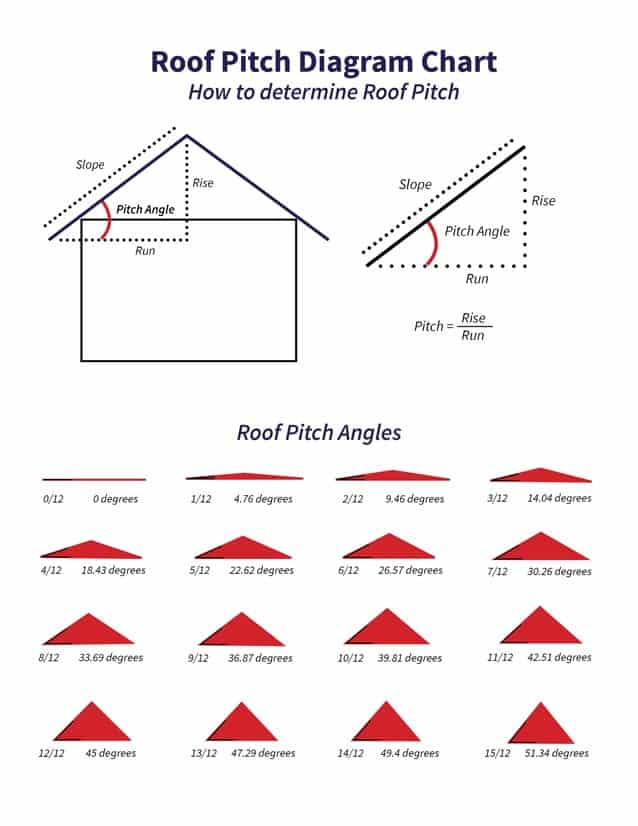

Rise is the vertical measurement of the distance from one point of the roof to the highest point of the roof. If you look at a right triangle, you’ll see the rise as the vertical component and the run as the horizontal component.
Run is the horizontal measurement of how far out the roof extends; typically the distance from the peak of the roof to the exterior wall.
Roof slope is often perceived as the same thing as pitch but it's important to understand the subtle difference. The slope is the incline of the roof. It's a ratio in inches of the vertical rise per foot of the horizontal run. For example, a roof with a 4-inch rise for every 12 inches of run, this ratio would look like: 4:12. The ratio always represents inches per foot.
Pitch is the incline of the roof. It's a fraction dividing the rise by the span, which is the distance between outside walls. For example, a roof with a rise of 4 feet and a span of 24 feet would represent a ⅙ pitch of the roof.
Above all, in this chart, you should be able to determine the pitch of your roof. As a result, this will help determine the proper roof vent collar height for your roof pitch.
An easier way to calculate your roof pitch is to measure the rafter length or truss system in the attic. Place your level under the bottom of the rafter, and after the bubble is in the center, mark it at 12 inches. Then measure vertically from the level to the roof rafter. This measurement will tell you the number of inches your roof rises in 12 inches of run. Again, to clarify, this will help you determine which roof vents are right for your roof.